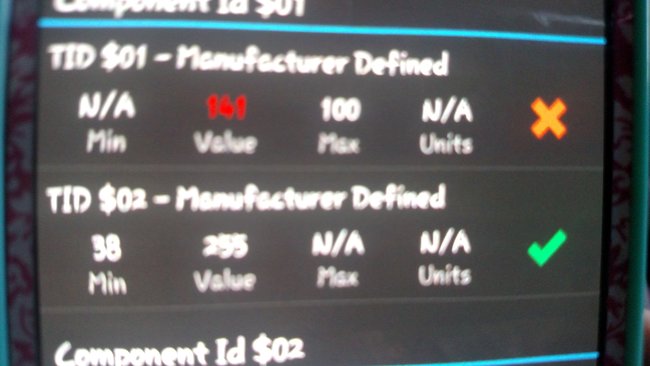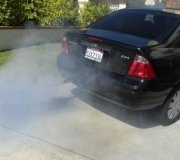
DRIVING PATTERN
The time required for each diagnosis varies with road surface conditions, weather, altitude, individual driving habits, etc. Zone A refers to the range where the time required, for the diagnosis under normal conditions*, is the shortest.
Zone B refers to the range where the diagnosis can still be performed if the diagnosis is not completed within zone A.
*: Normal conditions refer to the following:
Sea level
Flat road
Ambient air temperature: 20 - 30°C (68 -86°F)
Diagnosis is performed as quickly as possible under normal conditions. Under different conditions [For example: ambient air temperature other than 20 - 30°C (68 - 86°F) ], diagnosis may also be performed.
Pattern 1:
The engine is started at the engine coolant temperature of -10 to 35°C (14 to 95°F ) (where the voltage between the ECM terminals 70 and 58 is 3.0 - 4.3 V ).
The engine must be operated at idle speed until the engine coolant temperature is greater than 70°C (158°F) (where the voltage between the ECM terminals 70 and 58 is lower than 1.4 V) .
The engine is started at the fuel tank temperature of warmer than 0°C (32°F) (where the voltage between the ECM terminal 92 and ground is less than 4.1 V ).
Pattern 2:
When steady-state driving is performed again even after it is interrupted, each diagnosis can be conducted. In this case, the time required for diagnosis may be extended.
Pattern 3:
The driving pattern outlined in *2 must be repeated at least 3 times.
Pattern 4:
Tests are performed after the engine has been operated for at least 17 minutes .
The accelerator pedal must be held very steady during steady-state driving.
If the accelerator pedal is moved, the test must be conducted all over again.
*1: Depress the accelerator pedal until vehicle speed is 90 KPH (56 MPH) , then release the accelerator pedal and keep it released for more than 10 seconds . Depress the accelerator pedal until vehicle speed is 90 KPH (56 MPH) again.
*2: Operate the vehicle in the following driving pattern.
Decelerate vehicle to 0 KPH (0 MPH) and let engine idle.
Repeat driving pattern shown below at least 10 times.
During acceleration, hold the accelerator pedal as steady as possible.
Repeat steps 1 and 2 until the EGR system SRT is set.
*3: Checking the vehicle speed with GST is advised.
Suggested Transmission Gear Position for A/T Models
Set the selector lever in the "D" position with the overdrive switch turned ON .
Suggested upshift speeds for M/T models
Shown below are suggested vehicle speeds for shifting into a higher gear. These suggestions relate to fuel economy and vehicle performance. Actual upshift speeds will vary according to road conditions, the weather and individual driving habits.
Suggested Maximum Speed in Each Gear
Downshift to a lower gear if the engine is not running smoothly, or if you need to accelerate.
Do not exceed the maximum suggested speed (shown below) in any gear. For level road driving, use the highest gear suggested for that speed. Always observe posted speed limits and drive according to the road conditions to ensure safe operation. Do not over-rev the engine when shifting to a lower gear as it may cause engine damage or loss of vehicle control.
Gear KPH (MPH)
1st 50 (30)
2nd 89 (55)
3rd 128 (80)
4th -
5th -
Monday, November 7th, 2016 AT 6:42 AM





